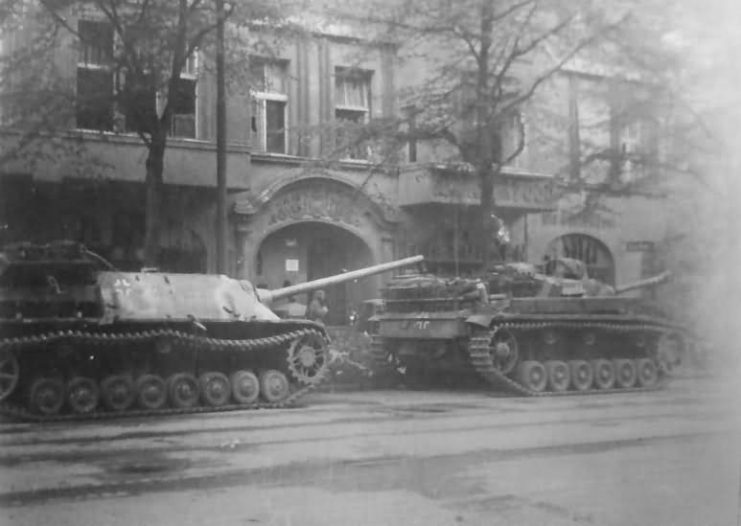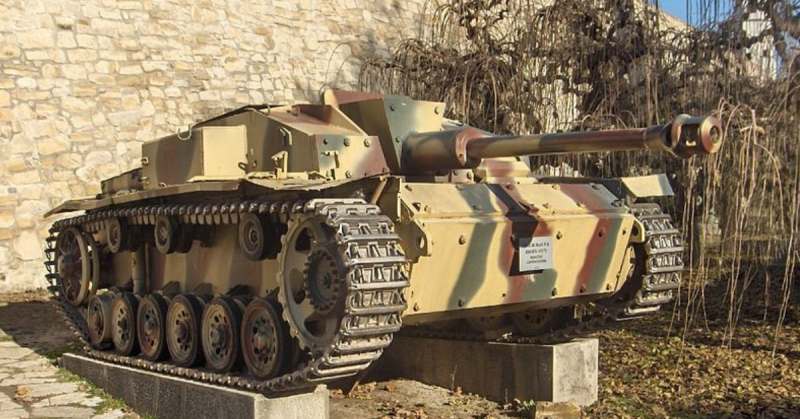Sturmgeschütz (or StuG) was a series of self-propelled artillery used by the Wehrmacht during the Second World War. The most common version, the StuG III, was built on the chassis of the PzKpfw III tank and was originally called “StuG.”
However, after the creation of the StuG IV, it received the name StuG III. Over the course of production, more than 10,000 copies of StuG III were created, making it one of the most-produced of the Wehrmacht’s armored vehicles.
The first versions of StuG III came from the Daimler-Benz plant in January and February 1940. However, throughout the production period, the self-propelled gun was modified many times. In February 1943, StuG III Flamm self-propelled guns began to be built on the base of the StuG III Ausf.F.
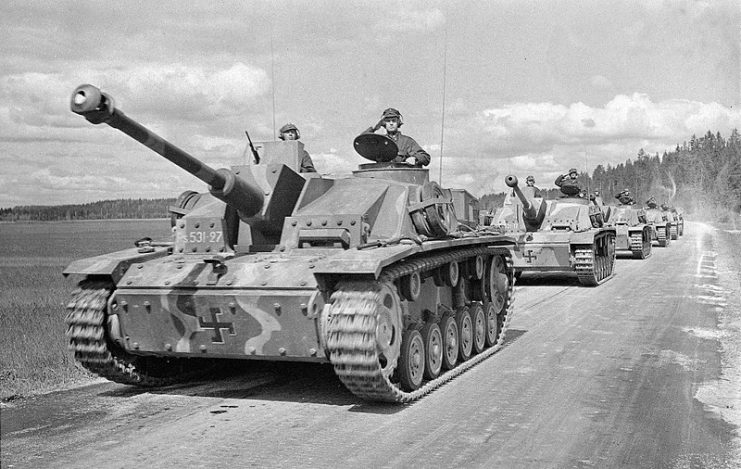
As the main armament of StuG III, a 75 mm StuK 37 L / 24 gun was initially used, which was later replaced by a 75 mm StuK 40 L / 43, and then by a 75 mm StuK 40 L / 48. Later versions of StuG III were also equipped with a 7.92 mm MG-34 machine gun. The number of rounds carried in the tank ranged from 44 to 54 shells and from 300 to 600 cartridges for the machine gun.
With each new modification, the tank’s mass gradually grew. Initially, the frontal reservation of the felling was nearly 2″ thick, the rear armored sheet was 1″, and the side armor 1.2″. However, the armor was later thickened further by welding additional plates to it. Depending on the modification, the weight ranged from 16 tons on the prototype to 23.9 tons.
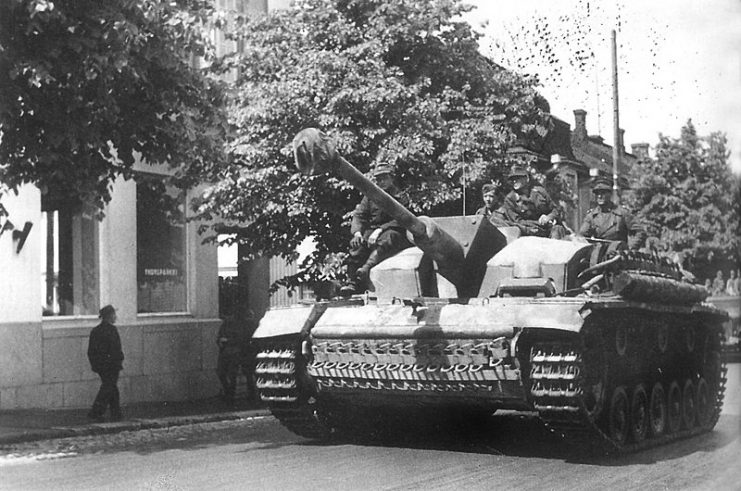
A 12-cylinder Maybach HL 120 TRM engine generating 300 hp drove the StuG III. Its maximum speed was 25 mph, and the power reserve was about 96 miles. The crew consisted of 4 people.
In November 1943, British aircraft bombed Alkett, a large manufacturer of StuG IIIs. As a result, production was significantly reduced. To compensate for the deficit in the production of the StuG III, Hitler approved the creation of the Sturmgeschütz IV. It was created with the Panzer IV chassis and the StuG III superstructure.
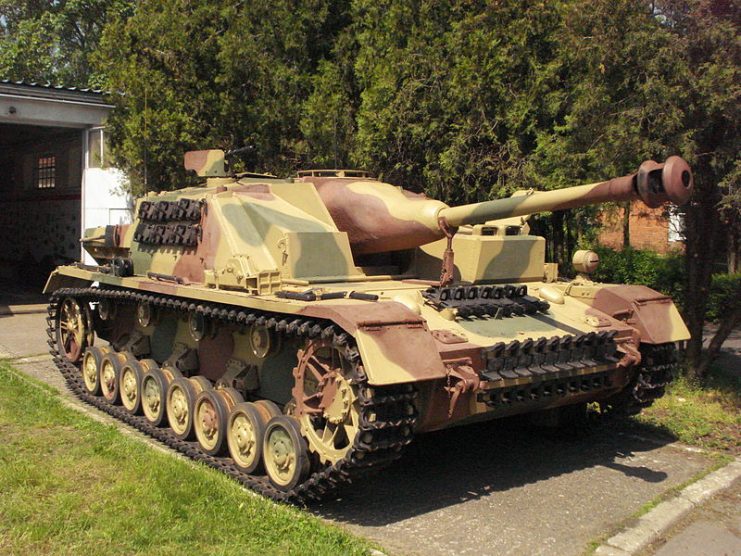
By Maciej Borun CC BY 3.0
The StuG IV had weapons, engine, and armor similar to the 78 of the latest StuG III modification, but thanks to its three fuel tanks with a total capacity of 114 gallons, it had a range of 80-130 miles. In addition, due to a more capacious chassis it could store more ammunition, consisting of 63 shells.
StuGs were simple to produce, and for this reason the Germans used them to replace the losses of standard tanks. They were widely used in the assault, artillery and anti-tank units of the Wehrmacht. StuGs showed weaknesses in the conventional tank role, but they were effective in defensive roles and as tank destroyers.
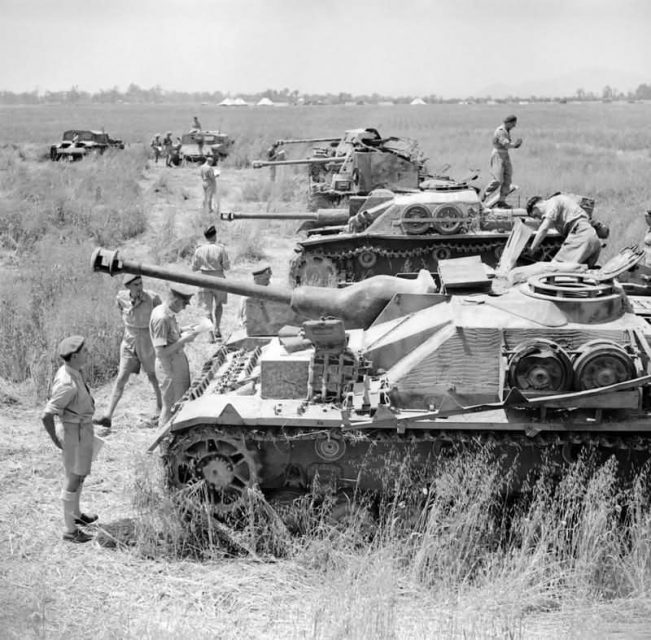
StuGs were actively used on all fronts until the end of the Second World War and many cases of their effective use are known. For example, in January 1943, StuG IIIs of the 184th Battalion of assault artillery destroyed 12 Soviet tanks within 4 days during the fighting near Demyansk.
A number of captured StuGs and Panzer IV were repaired in the USSR and were later transferred to Syria for use against Israel. In the 1950s, StuG IIIs were in service with the Spanish, Egyptian, Romanian and Syrian armies.
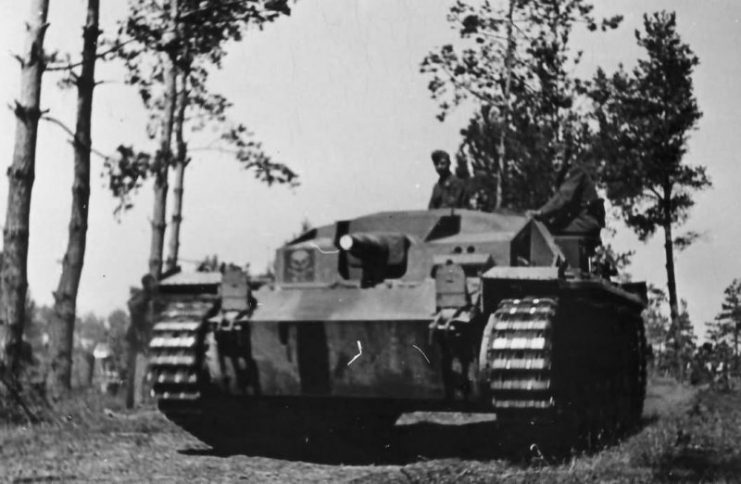
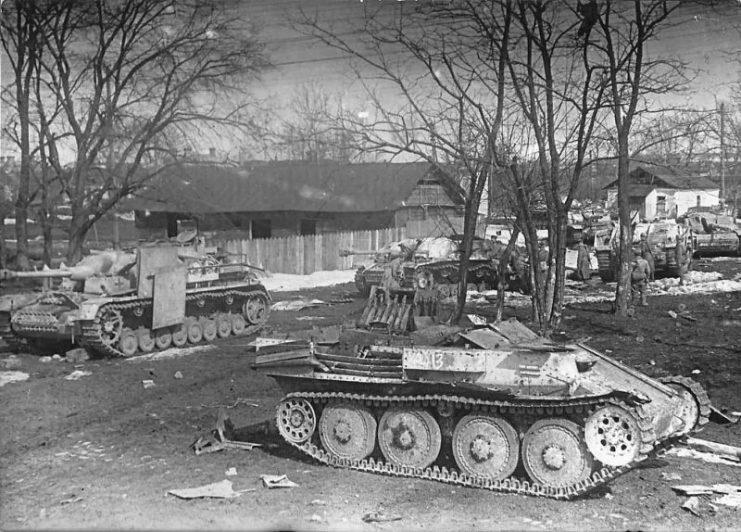
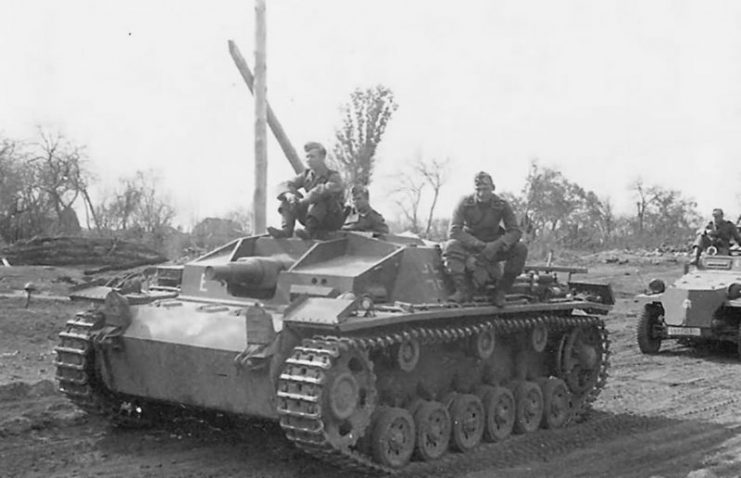
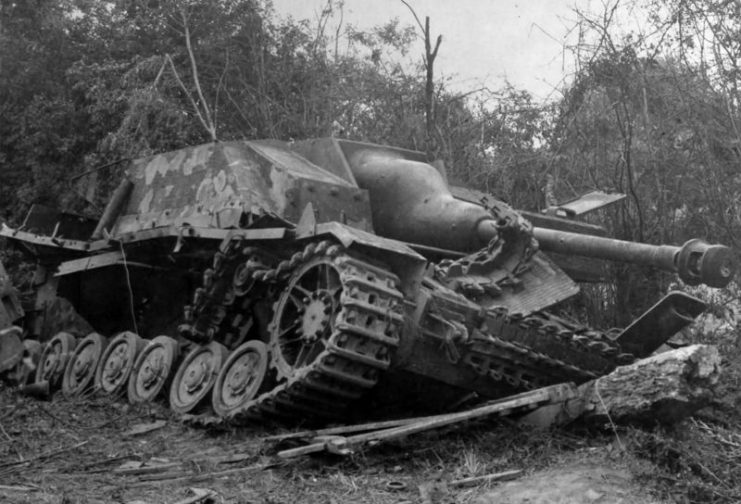
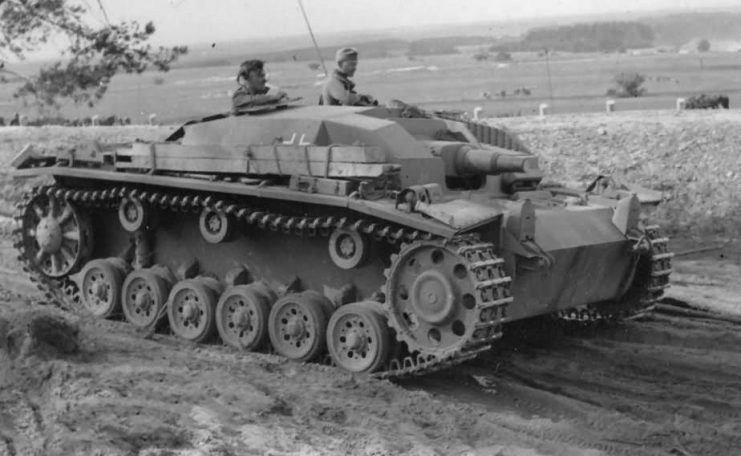
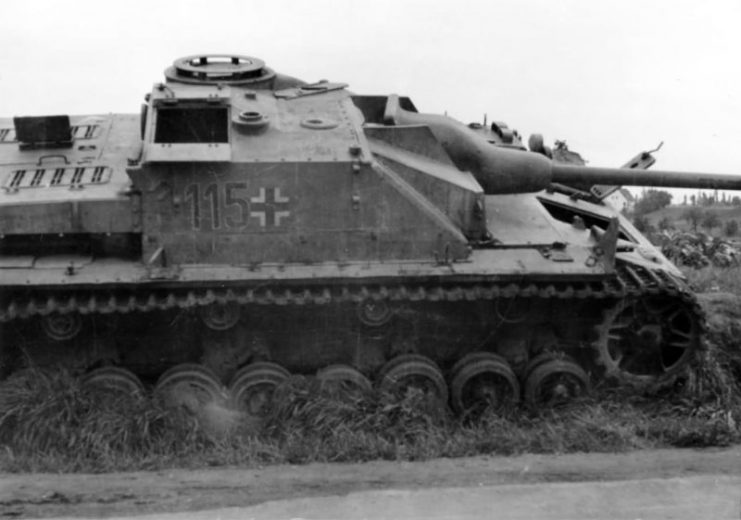
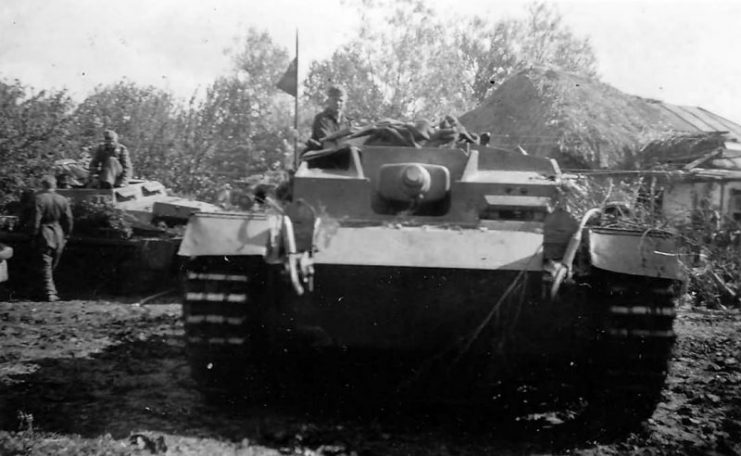
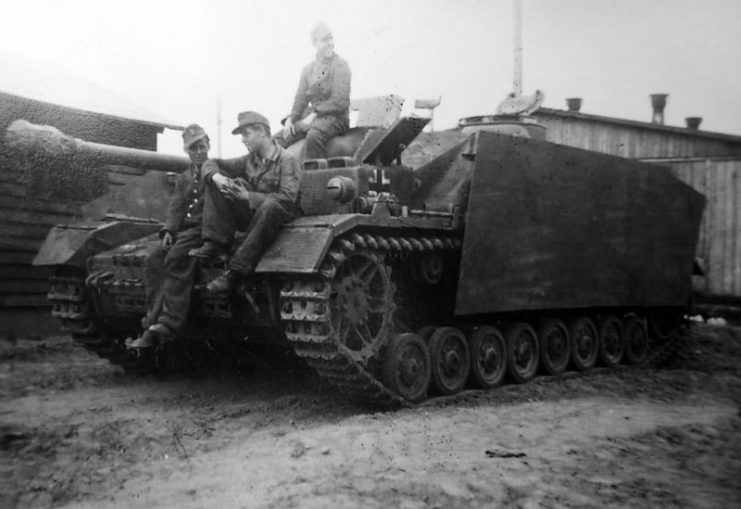
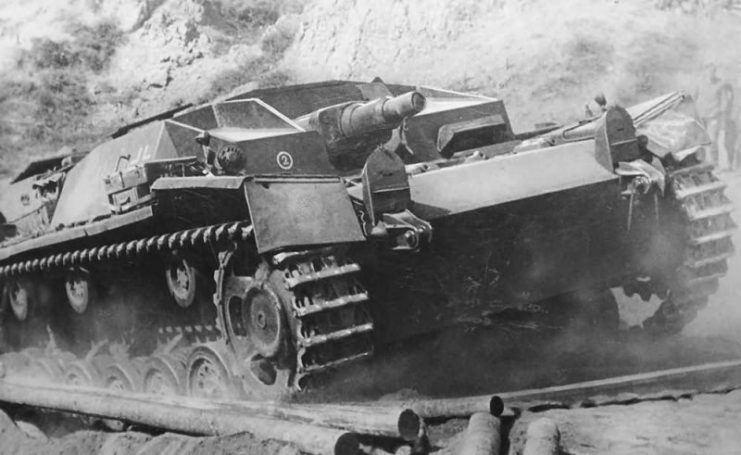
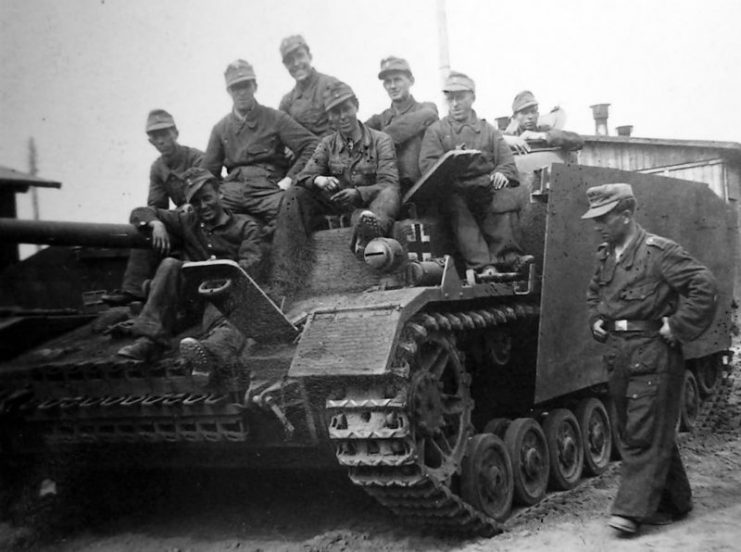
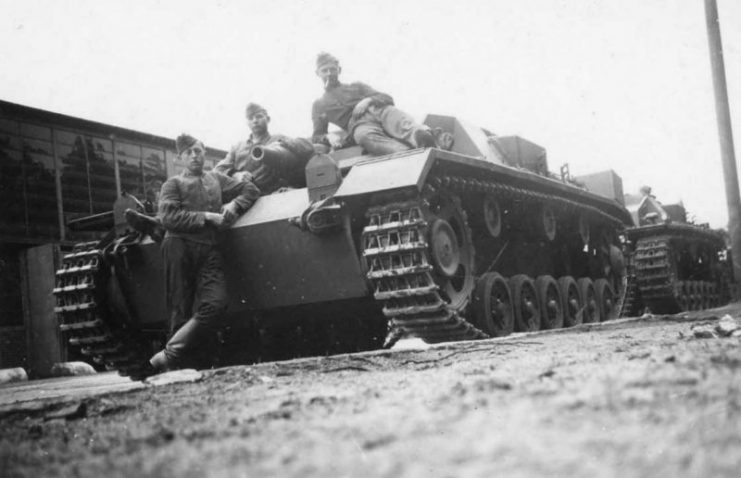
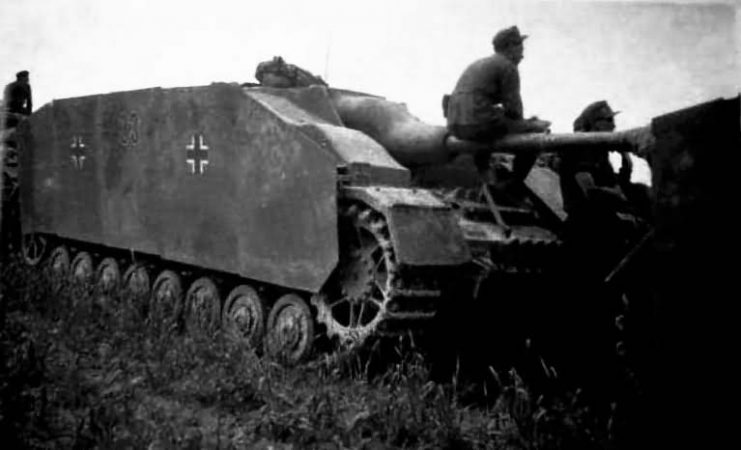
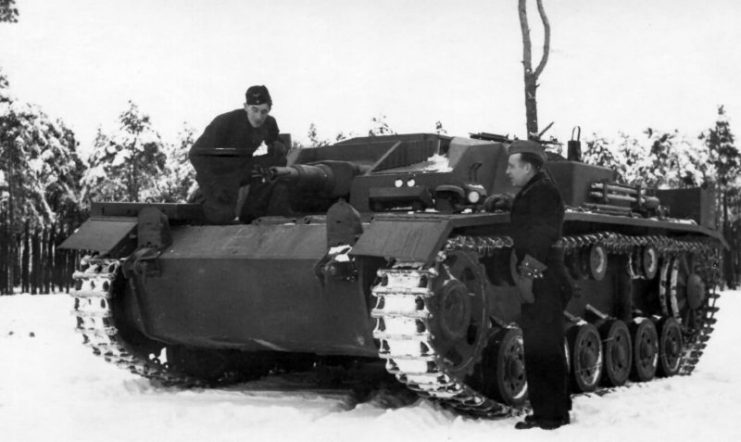
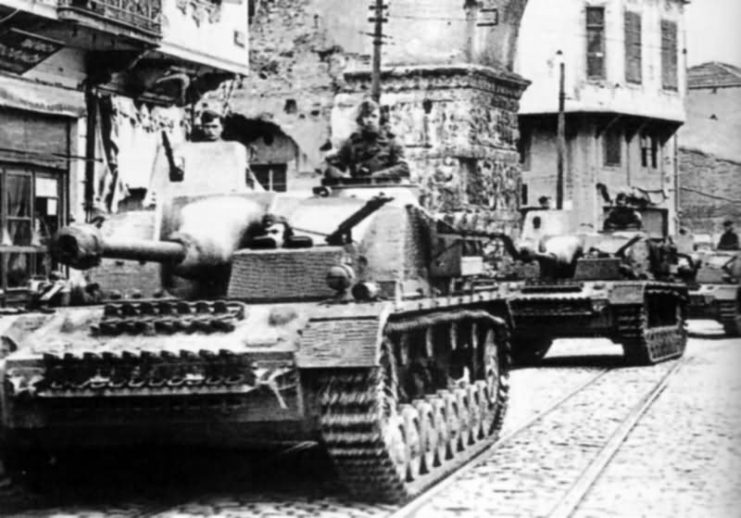
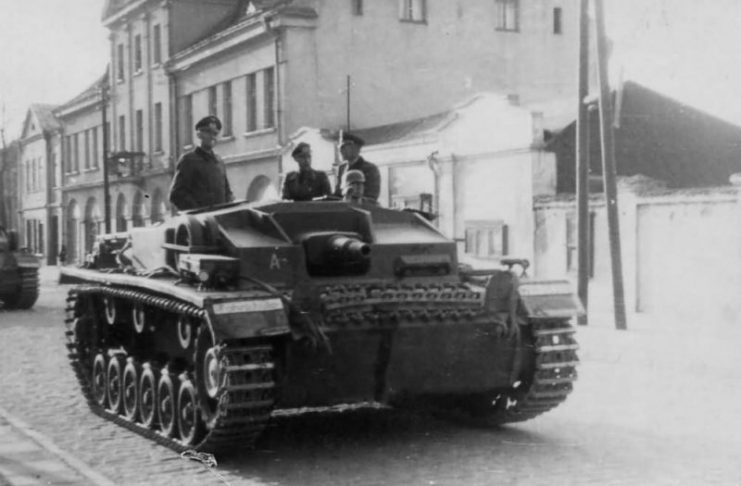
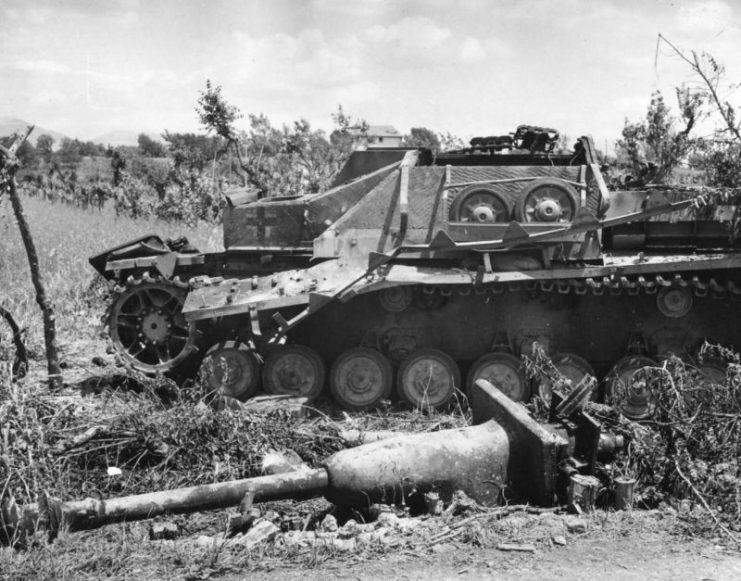
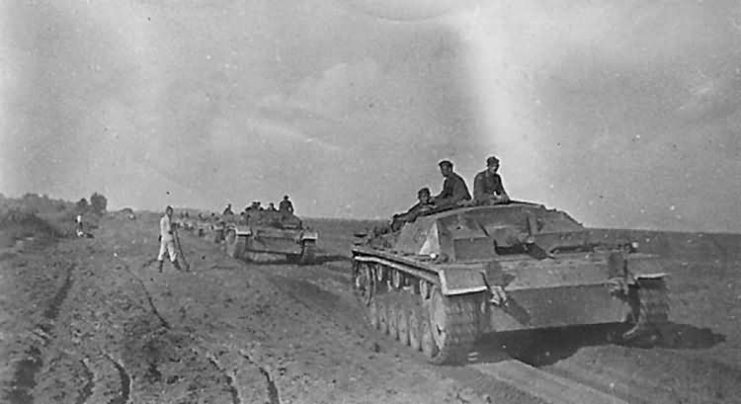
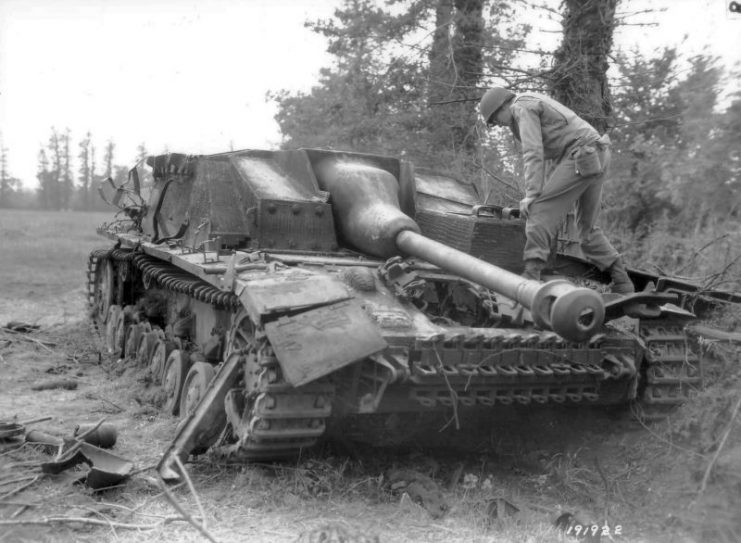
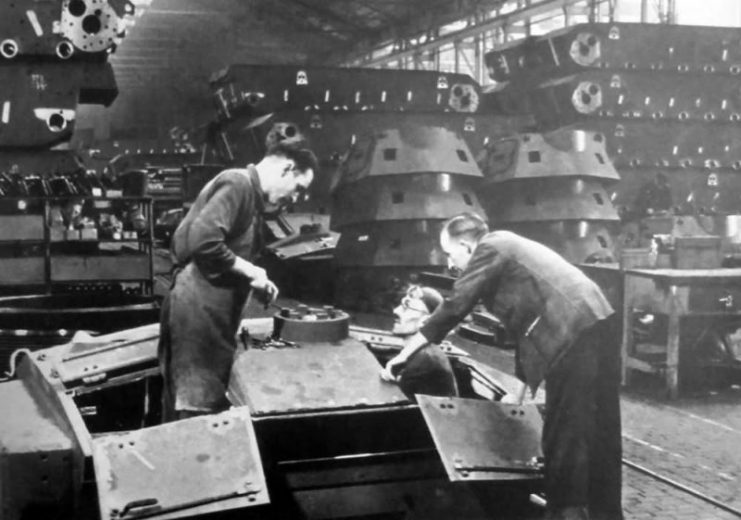
Read another story from us: M6 Heavy Tank was Armed to the Teeth – Great Photos
